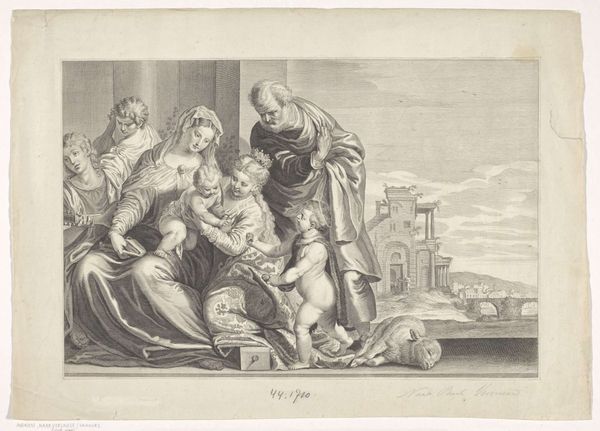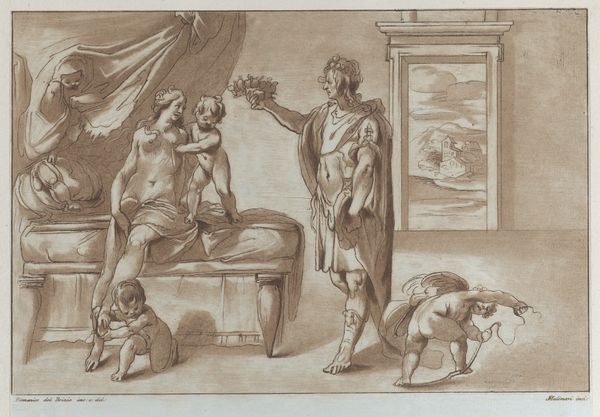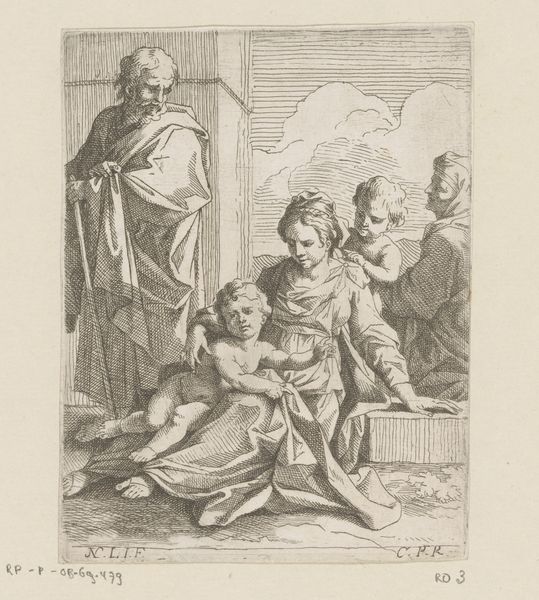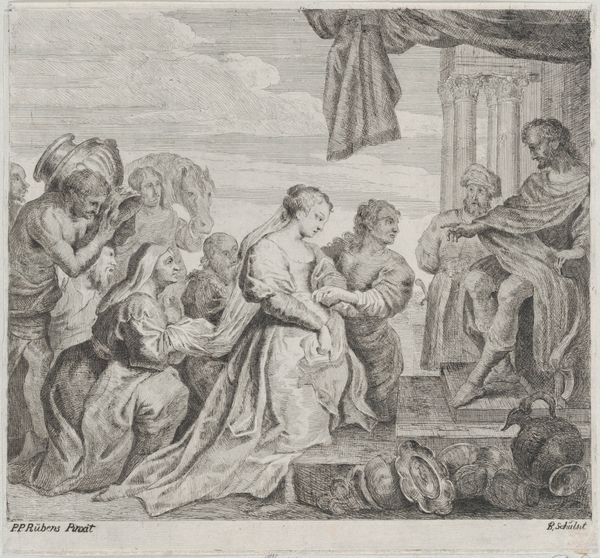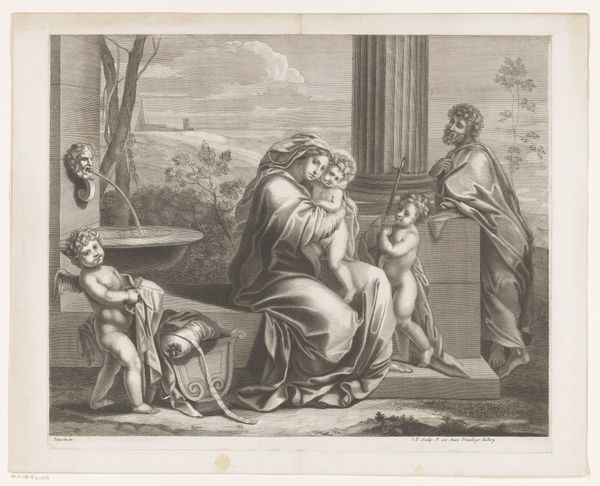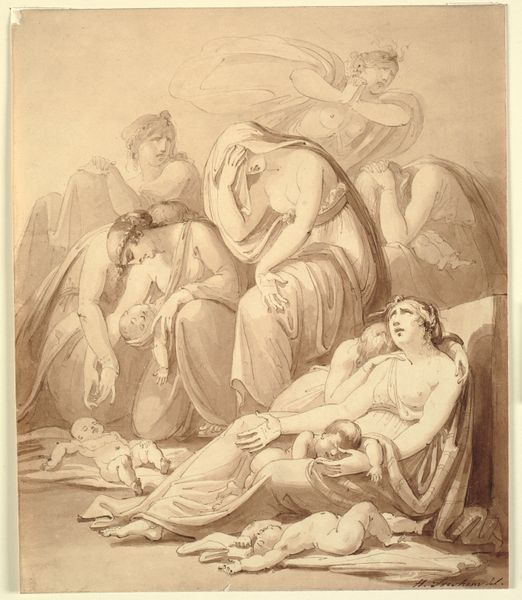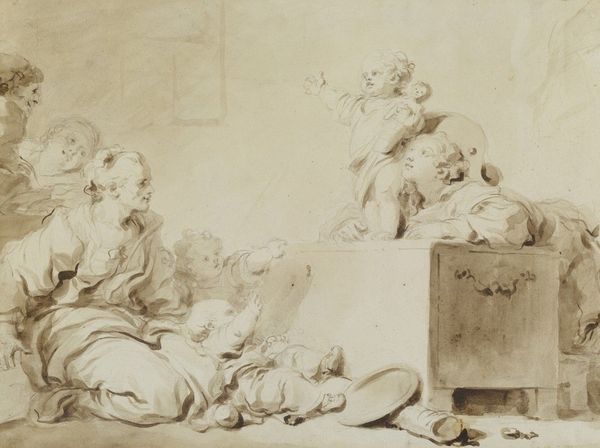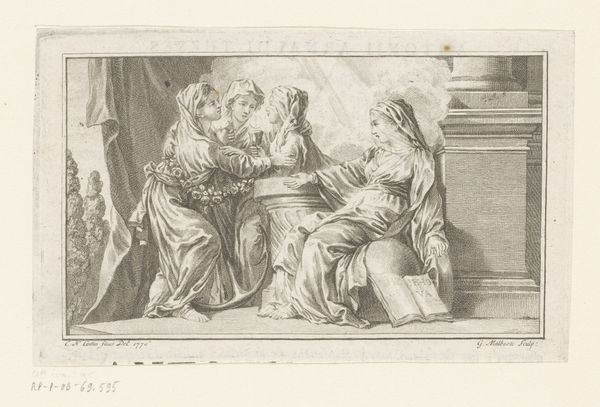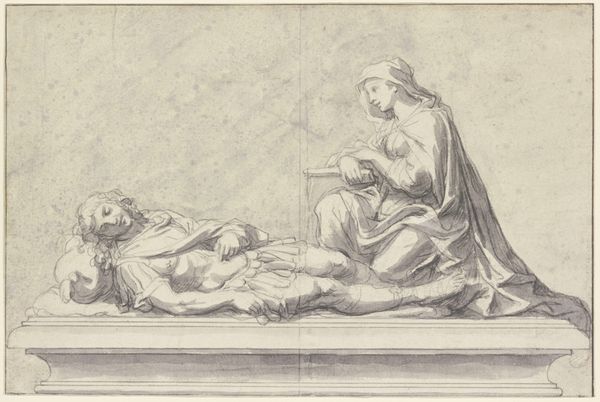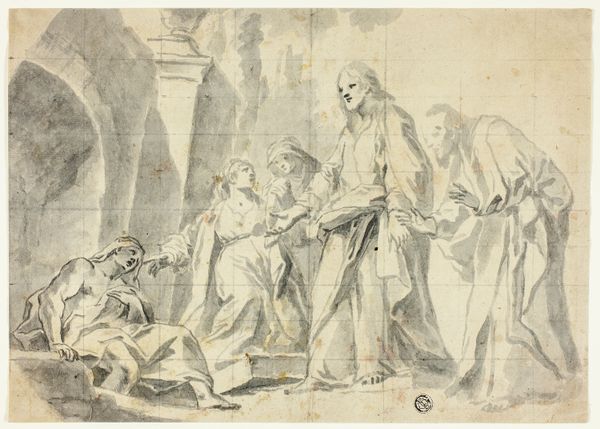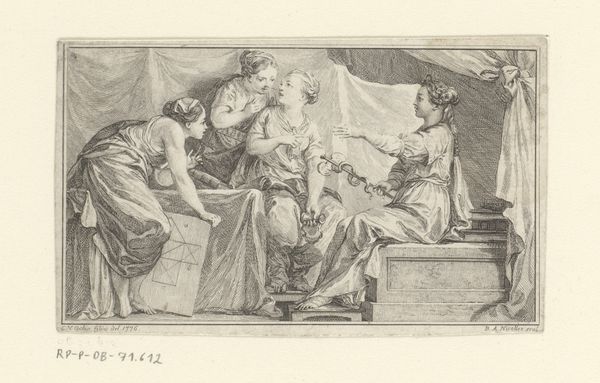
drawing, print, paper, ink, pencil, chalk, charcoal
#
portrait
#
drawing
#
baroque
# print
#
charcoal drawing
#
paper
#
charcoal art
#
ink
#
pencil drawing
#
group-portraits
#
romanticism
#
pencil
#
chalk
#
water
#
portrait drawing
#
genre-painting
#
charcoal
Dimensions: 254 × 348 mm
Copyright: Public Domain
Editor: This is "Mother and Three Children," an undated drawing by Jacopo Amigoni, housed right here at the Art Institute of Chicago. The charcoal tones create a scene of soft domesticity. I’m particularly drawn to the architectural elements in the background. How might we interpret Amigoni’s choices here? Curator: That's an astute observation. The presence of those architectural elements elevates a genre scene to something more...aspirational. Consider how artistic patronage during Amigoni's time, particularly in the 18th century, was closely linked with aristocratic circles. Family portraits like these, even in preliminary sketch form, projected an image of cultivated domesticity and classical learning. Does that resonate with you at all? Editor: I think so. The setting does make it seem less intimate and more like a...public statement, almost. Curator: Precisely. And it's not just about showing wealth or status. It also points to the enlightenment ideals gaining prominence, where education and classical references become markers of taste and sophistication. Even the act of creating a drawing like this, presumably intended for further development, speaks to the artistic processes valued by this educated class. How do you think its public consumption would reflect in modern society? Editor: Hmmm, it's hard to ignore the obvious connection to modern motherhood portraits online. Staged or not, domestic spaces always communicate so much about class, social position, lifestyle.... Curator: Absolutely. We’ve moved from painted sketches for elite families to filtered images online. Yet, that need to perform the "ideal" persists, reshaped through changing mediums and different political landscapes. It makes one consider art not only as the outcome of historical forces, but also as a catalyst for continuing social constructs. Editor: That really reframes my initial perception. It's interesting to consider how artistic expressions always exist in relation to society's values. Curator: Indeed, every artwork is a document of the public values of its time.
Comments
No comments
Be the first to comment and join the conversation on the ultimate creative platform.
